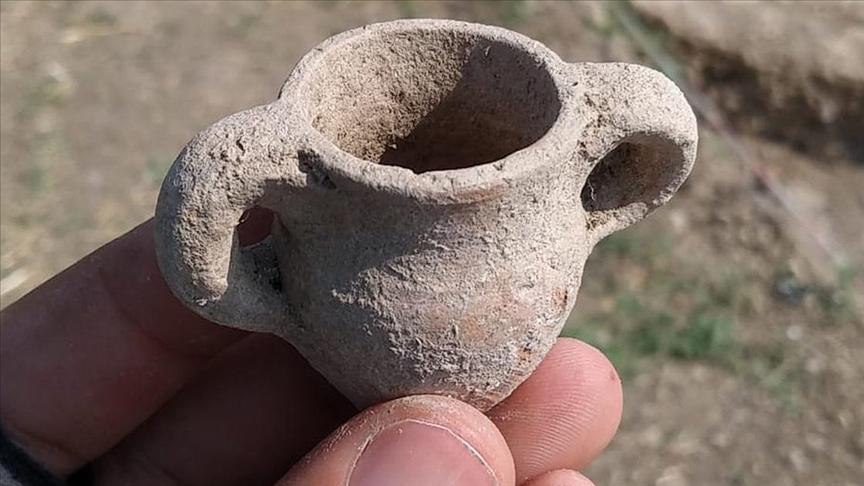Krásný! 
The first complete Roman writing set has been discovered
Categories: Nálezy nejenom s detektorem na blízkém východě
A Roman writing set from the late Roman period was found in Istanbul, Turkey. It is the first complete writing set to survive, with a shallow bowl, a miniature amphora-shaped calamus and a bone pen that still bears traces of red ink. It was used exclusively by civil servants and courtiers.
The approximately 1,600-year-old writing set was found during excavations at the Bathonea archaeological site in the Istanbul suburb of Küçükçekmece. Analysis of the bone pen revealed traces of red and black ink. Red ink was used exclusively by civil servants in the Eastern Roman Empire. According to experts, the set may also have been owned by a high-ranking merchant. Given the low literacy rate of the population at the time, this is an even rarer find.
The ancient Greek port city of Bathonea was founded in the 2nd century BC on the shores of the Sea of Marmara. Its ruins were first explored in the 1930s, and were rediscovered in 2007 at the lowered level of Lake Küçükçekmece. In 2009, archaeologists discovered two harbours, canals made of large stone blocks, wide cobbled streets, a Greek templem, a Byzantine church, an early Christian cemetery, an open water reservoir and a complex of buildings that was probably a palace or a palatial villa.
A large number of artefacts date from the 4th-6th centuries. It is not clear how Bathonea is related to Constantinople, some 30 km away, which was founded at this time. It may have been a satellite port serving part of the massive maritime traffic to the capital, or a protected port for the imperial fleet. The lake here was deep enough for the largest ships.
During the excavations, archaeologists also found traces of the earthquake that caused the collapse of the famous dome of Hagia Sophia in 557. The dome, still standing today, has survived several natural disasters and human intervention over the centuries. The Christian temple of Holy Wisdom lasted in use until 1453, when it became a mosque after the Ottoman conquest of Constantinople. For a thousand years, from the end of antiquity until the late Middle Ages, it was the largest cathedral in the world. In the 1930s it became a museum. Since 2020 it has been used for worship again and is a UNESCO World Heritage Site.
Excavations at Bathonea are being conducted by the Ministry of Culture and Tourism with Kocaeli University under the supervision of its archaeologist Sengul Aydingün.
Roman Nemec
Sources: thehistoryblog.com, aa.com.tr

A calamari in the shape of an amphora

Complete writing set with bowl, calamari and pen
 Bone pen bears traces of black and red (clerical) ink
Bone pen bears traces of black and red (clerical) ink
The article is included in categories:



